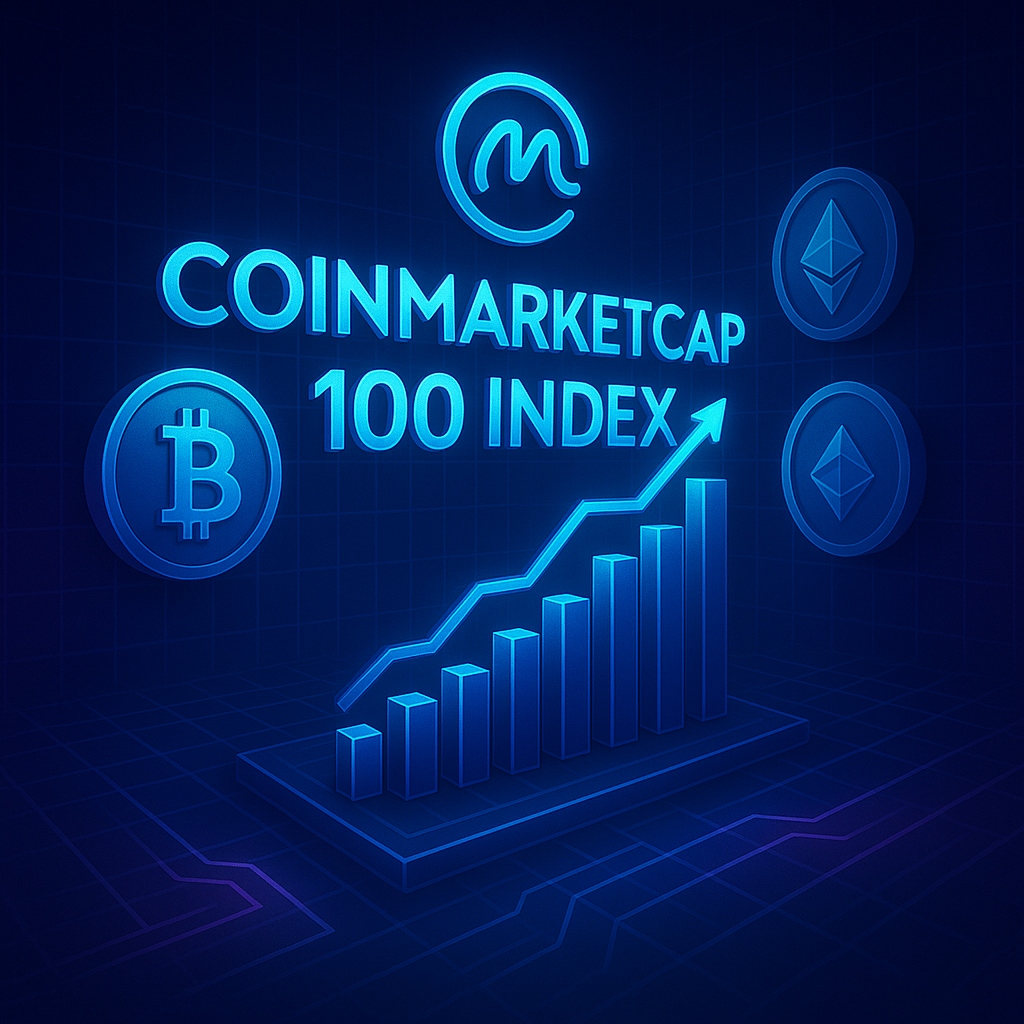CoinMarketCap 100 Index explained in depth—covering how the CMC100 benchmark is constructed, why it has become a go-to yard-stick for crypto performance, and what sets it apart from other market-cap indices. Consequently, this guide walks through constituent selection, weighting, rebalancing, governance, data access, and future trends—thereby giving investors, analysts, and builders the context they need to use the index with confidence.

1. What Is the CoinMarketCap 100 Index?
First and foremost, the CMC100 tracks the top 100 cryptocurrencies by market capitalization, excluding stablecoins and wrapped tokens. Launched on 9 December 2024, the index aims to be crypto’s equivalent of the S&P 500, offering a single number that summarizes roughly 90 % of the sector’s total value.
2. Methodology at a Glance
Because transparency matters, CoinMarketCap 100 Index explained methodology is published openly:
| Step | Key Rule | Source |
|---|---|---|
| Universe | Top 100 projects on CoinMarketCap, minus stablecoins & wrappers | s3.coinmarketcap.com |
| Weighting | Free-float market-cap weighted | CoinMarketCap |
| Rebalancing | First calendar day of each month, 00:00 UTC | CoinMarketCap |
| Data Inputs | Circulating-supply × price, aggregated across vetted exchanges | s3.coinmarketcap.com |
Furthermore, a factsheet updates index levels and historical returns, which—according to the latest release—showed a 1-year gain above 120 %.
3. Why the Index Matters
- Breadth. Together, constituents represent the lion’s share of crypto market cap; therefore, the CMC100 offers broad beta in a single glance.
- Benchmarking. Asset managers can, consequently, measure performance versus a rules-based yard-stick.
- Product Underpinning. Structured notes, ETPs, and robo-allocators already reference the index via the free API.
4. Governance & Rebalance Mechanics
Each monthly rebalance removes projects that fall out of the top 100 and, moreover, caps stablecoin influence by design. Because changes occur on a predictable schedule, traders can anticipate turnover and manage tracking error.
5. Accessing Data
Developers may pull real-time levels, constituent weights, and historical series through CoinMarketCap’s API; thus, dashboards and mobile apps can display the index at zero cost.
6. Limitations to Note
Nevertheless, the CMC100 is market-cap weighted, so Bitcoin and Ethereum dominate. Liquidity shocks or methodology errors—though rare—could, therefore, distort short-term readings.
7. How It Compares
Unlike S&P’s Digital Asset Broad Market Index, which excludes lower-liquidity coins, the CoinMarketCap 100 Index explained here lets smaller projects remain as long as they rank inside the top 100. Consequently, it captures a touch more growth-token upside, albeit with slightly higher volatility.
8. Looking Ahead
Ultimately, monthly reviews may give way to quarterly governance enhancements, greener screens, or sector sub-indices—thereby aligning the CMC100 with evolving investor demands.
Key Takeaways
- CoinMarketCap 100 Index explained: a free-float, market-cap benchmark of the top 100 crypto assets.
- Transparent methodology, monthly rebalancing, and API access make it widely adoptable.
- While heavily weighted to mega-caps, the index still reflects emerging-token momentum.
- Finally, understanding its construction helps investors benchmark, build products, and grasp market breadth.